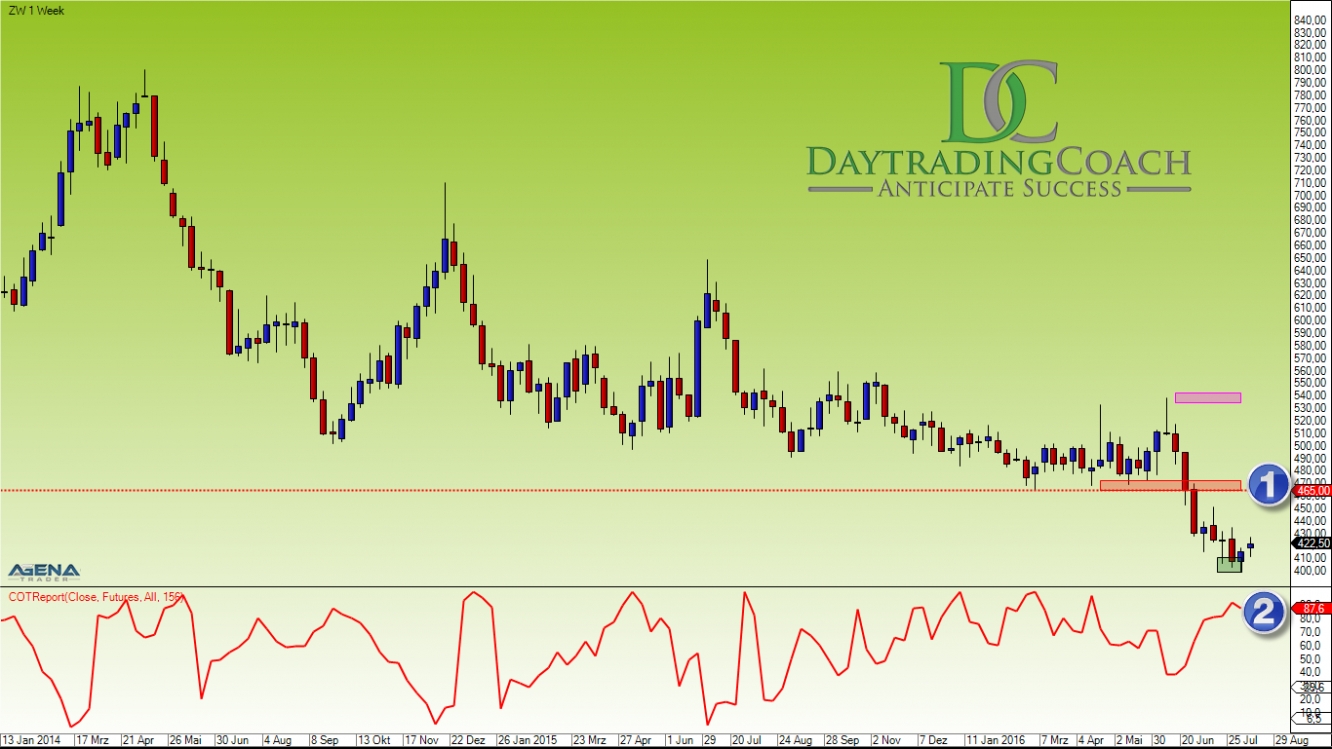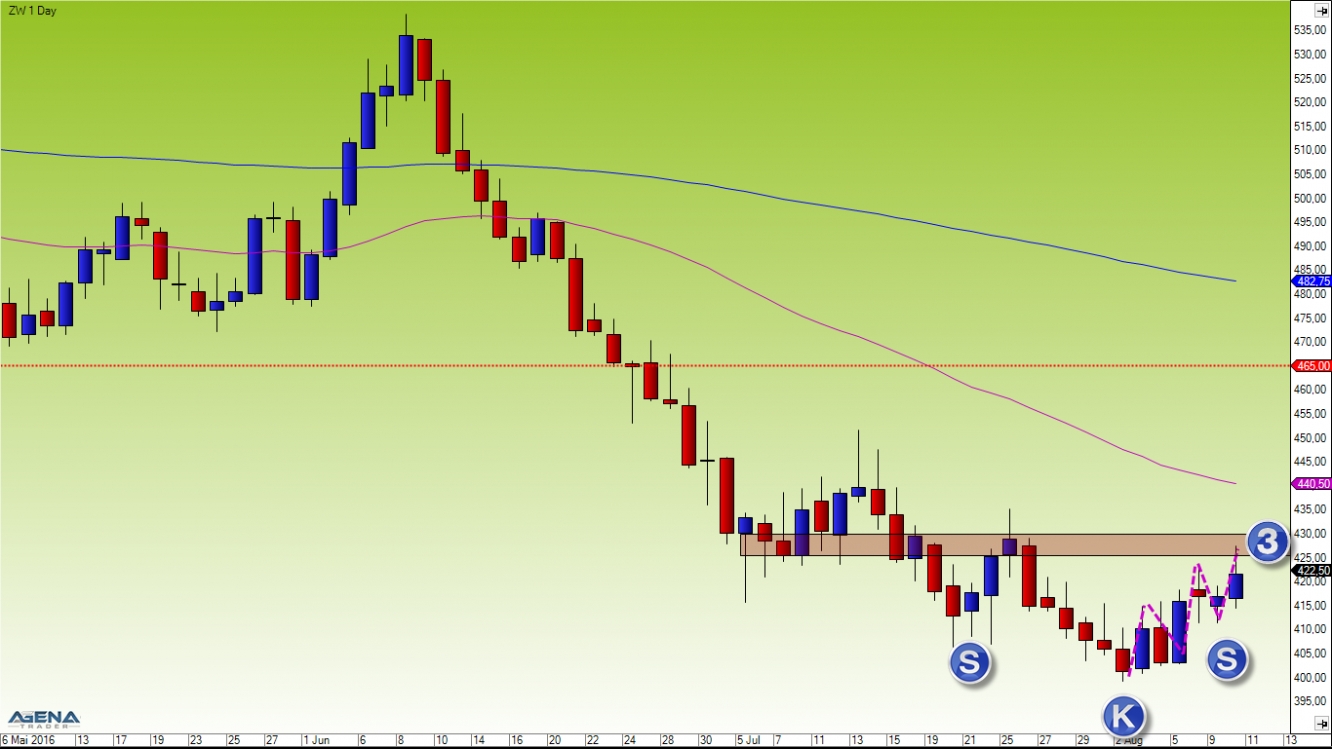Wheat has been in a downward trend for years now. As with most commodities, therefore, wheat has been heavily punished again in the last months. Now the time is ripe for a recovery. How far this recovery will go in the price is difficult to estimate. A first prominent resistance level in the weekly chart can only be found at the 465.00 (point 1 in the chart). This is where the old low from March 2016 is located.
The positioning of the commercials from the CoT report also speak for themselves. Since last week, we have clearly reached the “buy” area in the CoT index again (point 2 in the chart). During the entire last 140 cent movement in wheat, from 540 cents down to 400 cents, the commercials successively dismantled their short positions. The long positions remained practically unchanged in the same period of time. For me, this is a clear sign that it is time for a long trade in wheat.
In the daily chart, a first small upward trend has established itself, which for now has got stuck at the small resistance level (point 3 in the chart). A continuation of the downward movement could lead to the completion of an inverse head and shoulders in the daily chart. Anyone who goes by the head and shoulders can even well place a stop at the 411.00 already. Even for an extended swing trade in the long direction, there is currently a very good chance-to-risk ratio of approx. 2:1. The current price of wheat future is at 420 cents. The stop at the yearly low holds a risk of about 20 cents, with a profit target of 40 cents until shortly before the next resistance level.
However, the publication of the US Department of Agriculture’s prognosis for supply and demand in the agricultural commodities is planned for tomorrow (Friday 12.08.2016). This so-called WASDE report could cause movement in both directions. The last publications of the report suppressed the prices in the agri-commodities rather than spurring them on.
Let’s wait and see!
Disclaimer:
Exchange transactions are associated with significant risks. Those who trade on the financial and commodity markets must familiarize themselves with these risks. Possible analyses, techniques and methods presented here are not an invitation to trade on the financial and commodity markets. They serve only for illustration, further education, and information purposes, and do not constitute investment advice or personal recommendations in any way. They are intended only to facilitate the customer’s investment decision, and do not replace the advice of an investor or specific investment advice. The customer trades completely at his or her own risk.


